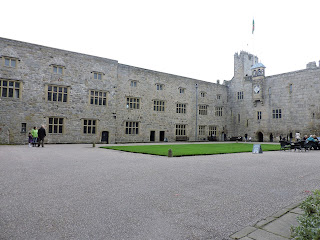St. Patrick's story is actually similar to Joseph's in the Bible.
Most think St. Patrick was Irish, but he actually was Roman/Britain but he was captured by the Celts and sold as a slave in Ireland. He grew up among the Irish herding their livestock. He learned their customs, culture, and language. He knew what they believed and why they believed it.
During his time as a slave, he didn't preach to the Irish -- he learned their ways. He eventually returned to his home, completed his studies, and felt called to go back to Ireland as an old man. He taught the Irish the Good News, which they were incredibly receptive to.
Celtic Christianity has always been founded on relationships because that is the Irish culture. St. Patrick was successful because he didn't try to force Roman or British culture on the Irish. He spoke to them in their own language and could use what he knew about their history, beliefs, and culture to speak to them in a way they understood. He merely told them the Good News of Christ which they could follow without completely setting aside their culture.
In fact, Ireland is said to be the only country in the world to be "converted" to Christianity without bloodshed.
These new Irish Christians founded monasteries which later basically educated Europe during the early middle ages. Their missionaries went throughout the world and are mostly responsible for bringing the Picts and Anglo-Saxons in Scotland and England to Christianity.
Of course, thousands of legends surround St. Patrick.
He is said to have used a clover or shamrock as an example for the Trinity. That may or may not be true, but if it is, it is an example of how he appealed to their culture and beliefs because the number "3" has always been important to the Irish.
One of the most famous legends, which is a myth, is that St. Patrick, climbed Croagh Patrick (Like I did) and chased the snakes out of Ireland. Although he likely did climb the mountain, -- all legends are founded in some grain of truth -- there were never any snakes in Ireland for him to chase out.
But whether some stories are true or myth, it doesn't really matter. St. Patrick had an undeniable impact on the Irish culture, and as a result, on the world. But don't take it from me, here is a wonderful video which explains St. Patrick.



































